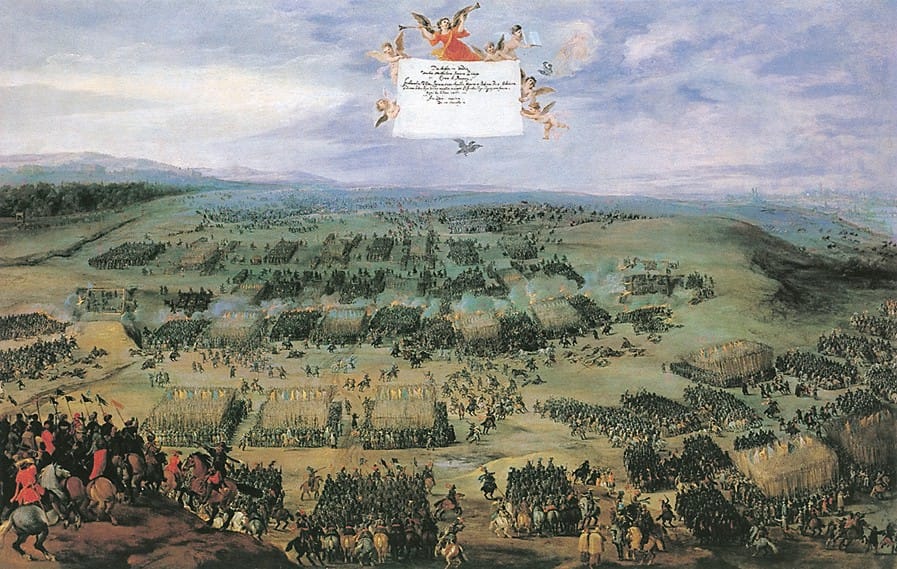Category Archives: Research
Modern-Day Napoleonic Battles & Travels, Part the Second
Cyrano’s next entry to the travelogue ~
Jim Owczarski, 05 November 2016
One of the great joys of travel is discovering something you never thought to find. This is particularly true for me if it’s something that runs the risk of being lost to time or cultural preference. A good example is the small memorial sign atop the Stare Vinohrady (Old Vineyard) at Austerlitz. For all the effort that went into making the battlefield ready for the 200th anniversary back in 2005, it seems no one bothered to put up something more permanent than a simple metal sign, painted white-on-blue, and mounted on two stakes at the site of one of the greatest cavalry charges in history.
Admittedly, depending on how one gets up there, the route to the top of the Stare Vinohrady can be quite the hike and, based on the fair number of beer bottles and cigarette butts in evidence, it seems a popular location for late night fire pits and drink-a-thons. Still, not long after I laid eyes on the sign — and worked my way through a rough translation of its Czech inscription — I was determined at least to leave it standing and its restoration, however brief, is something I will always remember.
Modern-Day Napoleonic Battles & Travels, Part the First
Cyrano delves deep into the world of Napoleonic battlefields in preparation for an eventual visit, and more ~
Jim Owczarski, 08 September 2016
Most images click to enlarge
People are incessantly telling me I’m missing the point. (ed note – he frequently is, but usually about other things)
They wonder how someone can visit Paris and prefer the Army Museum to the Louvre — pace those areas given over to David — or would rather spend time crawling over an Old Vineyard in Bohemia rather than sitting in a coffee house in Vienna two hours to the south.
They even have a word for what I love to do, viz., “dark tourism”. I suspect it’s not intended as a compliment.
But I, and I am assuredly not alone, am obsessed with Napoleonic battlefields. I read about them, watch movies about them, play as many games about them as I can lay my hands on, and, far less frequently than I would like, visit them. I’ve been to Waterloo twice, Austerlitz once, and, having spent this Summer taking my son to middle-American water parks, am determined that next Summer will bring a visit to Jena-Austerstadt. The management has asked me to share my own journey to Jena as well as talk about those conflict simulations that take up the campaign and its battles.
Perspective in Wargames: Who Exactly Are You?
When you’re “playing” the game, who are you “playing”? ~
Derek Croxton, 07 May 2016
You are Napoleon. You have a chance to remake the map of Europe with your Grande Armée. You are Robert E. Lee, trying to fend off the Union until foreign aid arrives. You are Patton, dashing through France with your Third Army.
These statements are typical of the sort of advertising used to sell wargames, and are indicative of why gamers play: they like assuming the role of an historical figure and get a vicarious thrill out of making the same sort of decisions, only trying to make better ones.  Gaming is thus a form of role-playing, and a lot of the pleasure hinges on what historical figure one plays. Some people would never play the Union in Civil War games, others refuse to play the Confederacy: they are identifying with the historical actors in more than an intellectual sense. There are, of course, games that are entirely or almost entirely abstract, such as chess, which are also fun to play. While they provide the same sort of intellectual challenges, however, they do not provide the same kind of fulfillment as a chance to remake history.
Gaming is thus a form of role-playing, and a lot of the pleasure hinges on what historical figure one plays. Some people would never play the Union in Civil War games, others refuse to play the Confederacy: they are identifying with the historical actors in more than an intellectual sense. There are, of course, games that are entirely or almost entirely abstract, such as chess, which are also fun to play. While they provide the same sort of intellectual challenges, however, they do not provide the same kind of fulfillment as a chance to remake history.
The fun of gaming, then, is in part based on accepting historical limitations. There is always a desire to transcend these limitations – to have Napoleon win at Waterloo, for example – but certain restrictions have to be accepted. If one wants to be Napoleon, one has to accept the fact that France’s navy will probably not be a match for Britain’s and that one will be fighting a whole coalition of forces, just as one will benefit from having a nation in arms and well-disciplined, loyal, and courageous soldiers. History consists of a virtually infinite number of forces, of which an individual – the player – can only control a very few. This is precisely what drives a game: deciding how to act within the constraints of the historical situation. This article investigates the problems of trying to put players in historical roles: first of identifying proper historical figures to simulate, and second of creating the possibilities and limitations that those figures historically faced. I contend that a game is usually more fun and more realistic where a designer has given thought to these issues.









